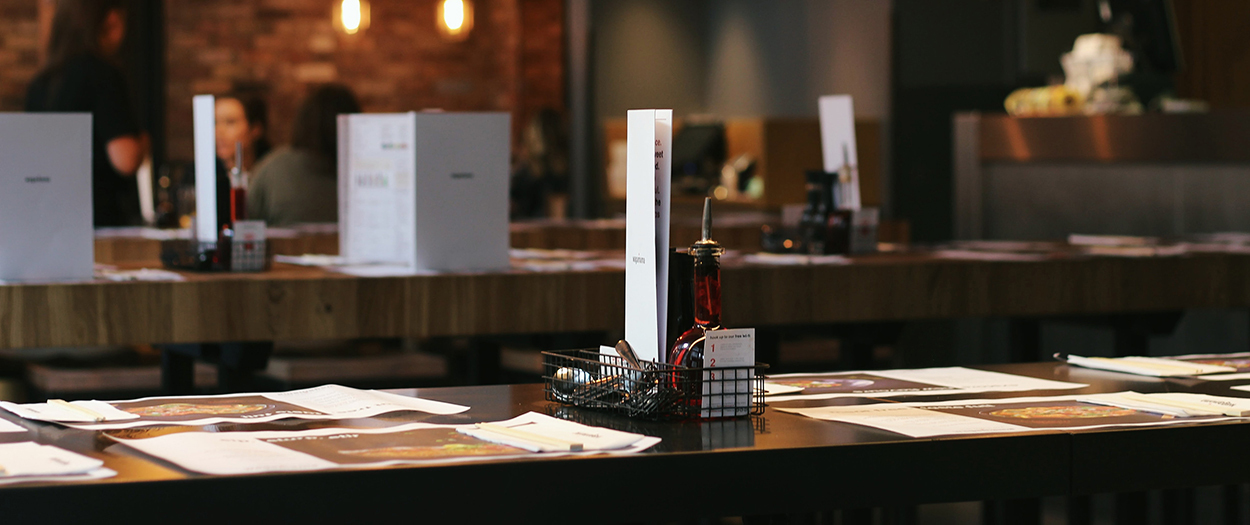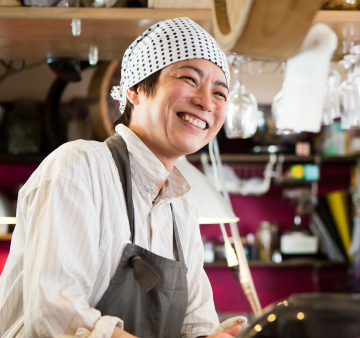How you prevent guests from ordering unprofitable dishes
Uwe Ladwig
June 2020

In a series of articles, gastronomy consultant Uwe Ladwig explains what is important after the lockdown. In the first part he listed the five biggest mistakes restaurateurs should avoid if possible. His second contribution was a passionate plea for switching to the contribution margin method. In this third part, he focuses on menu card optimization with the help of menu card diagnosis.
Why menu diagnosis is a money printing machine and how you can use it
“Never change a running menu”: Many restaurateurs are afraid to change their menu. It’s like opening an old box you keep in the attic. The box is dusty, and you don’t know exactly what’s inside. You would rather not touch it. Because who knows if you can close the box once you have opened it? I hear again and again that restaurateurs prefer not to change anything. Because the guests are used to the menu and do not tolerate any changes – especially not in price. If you feel the same up until now, consider introducing a new menu after reopening.
If guests visit a restaurant or café, they will no longer compare prices with the prices of pre-corona. Often the menus also look different. It’s a significant chance to adapt the menu to the new situation. Because the menu earns your money. It is a money printing machine – if you use it correctly and stop selling your food below value.
Use the menu to highlight the winners and hide the racers
In gastronomy, the best-selling dish is usually a “racer” (in Germany: “Currywurst”—a sausage with a gooey tomato sauce, spiced with mild curry powder and other secret ingredients). The Currywurst is usually not a “winner” because its contribution margin is too low. With every Currywurst you sell, you lose money. In the previous article I already explained that the best-selling dish should never be a “racer” but must be a winner. Using examples, I have shown how you could gradually increase the contribution margin to get as many winners as possible on the menu.
Once you have increased the contribution margin, it gets exciting: Will guests behave as imagined? Will they order fewer racers and prefer the winners? And: If they discover increased prices on the menu, will you lose them to the competition next door? To avoid this, consider an increase in the contribution margin in combination with changing your menu – and not just by an increase in prices.
When the Currywurst becomes a “Giant Currywurst”
Let us assume you have increased the contribution margin for the Currywurst – a classic racer – and you want to increase the sales price by three euros within a brief period. If you want three euros more for the same sausage, you are risking angry guests. But If your guests found a “Giant Curry Sausage, 180g, with homemade curry sauce” on the menu, guests might accept a higher price more willingly. The dish should not look the same as before. After all, the customers do not want to be “curried”.
With the description of the dish, you could “pimp it up”. Depending on your clientele, consider increasing the perceived value with attributes such as “from the organic farmer”, “from the butcher next door”, “from happy chickens” or even a gram indication. You could also add a salad to dishes with a low contribution margin or create a full menu. After all, you don’t want to offer just small things, but a complete dish.
The “corona card” as a stroke of luck and test field for menu optimization
But it is not enough to simply adapt the description of the dishes and the prices. Your menu card should look as different as possible. With a limited corona menu, you have an excellent opportunity to get rid of the old, laminated menu. Many restaurateurs currently fit their dishes on one paper page. On the other side they have added a form to fill in the required information. You could change such menus from one day to the next and nobody will notice: Move up the winners, hide the racers, lower the sleepers in the price and eliminate the losers. And while you’re at it, also change the regular menu – the menu diagnosis will help you do that.
For a menu diagnosis you need the dishes, names and sales figures from the POS system, the cost of goods from the recipe and the purchase and sales price. With your menu, you guide your guests to the winners with several tricks. If this is successful, you will feel it in the cash register quickly. An example: Based on a menu diagnosis with adjusted contribution margins, a restaurateur could make €10,000 Euros more profit in one year.
How did we proceed? We cut the menu apart and rearranged it according to various criteria. We positioned dishes with a high contribution margin at the top (right) of the menu, hiding the curry sausage at the bottom left. Overall, we increased the contribution margins and adjusted the descriptions. With an input of about €1,000 for menu diagnosis and the creation of recipes for the dishes, the restaurant could achieve a tenfold profit. You will not get a return on investment of 1:10 for one or two hours of diagnosis with any other investment. That is exactly why the menu diagnosis is a money printing machine!
Don‘t only change the prices and descriptions – positioning and layout are also important
You increase the feeling of value not only by changing the description. There are many more tricks. The goal is that your guests will memorise the new card—and forget the old card. Why not experiment with the following measures:
- Place the card “upside down”.
- Write winning dishes in bold.
- Menu without “€”
- On the menu card, highlight the winners in boxes.
- Use different tab spaces to make dishes more difficult to compare.
- Don’t sort the dishes by price.
- For example: “Our classics…”; “Our guests love …”; “You should try …”, “Our chef is particularly proud of …”.
- Think of a “story” that matches the descriptions of the dishes emotionally and visually.
This is how you measure the success of the menu diagnosis
Give your optimised menu some time. After about a month you could check if changes have already impacted your turnover, contribution margin and profit. A customer of mine recently told me he increased the Thai curry from €17.50 to €22.90 as part of a menu change and the dish not only sold much better but also mutated into a winner.
After the reopening, there is a different clientele visiting the restaurants. So, a monthly menu optimisation is worthwhile. In general, I recommend a menu diagnosis with subsequent optimisation about two to four times a year. Calculate the potential for price increases by comparing the sales mix and popularity (100 : number of items (analysed) x 70% (Pareto principle today 30 – 70 / no longer 20 – 80) – Example: 100 : 6 main courses x 70% = 11.7% popularity). Dishes ranging three to five percent above the popularity level are suitable for a price increase.
To perform a menu diagnosis with and without contribution margins
For a menu diagnosis, you need the contribution margins. But you could also start without them. If you have not yet calculated the recipes and therefore do not have any figures for the cost of good, we take the net sales price and calculate with an average cost of goods of 30 percent. This is a rough calculation, but it is better than no calculation at all.
By combining the contribution margin calculation and menu diagnosis, you can increase your profit and will lead the pack. You are even one step further if you calculated the same contribution margin for every dish. Then you will be at the top: You don’t care which dish your guests order. You earn the same money in every dish. For the guest, it is also the fairest method of calculation.
The next article is about duty roster optimization (the supreme discipline of business management), with which you significantly increase the productivity and thus the profit of your business.
Uwe Ladwig is the owner of F & B Support in Willich. He supports restaurateurs in business challenges with consulting, coaching, webinars, online courses, seminars and calculation packages. He offers menu card diagnoses as online courses, Excel templates and services. Further information at www.f-bsupport.de

A reservation system must offer various services. Your customers should be able to reserve a table at any time. A digital reservation system regulates and updates the availability of tables while allowing manual changes. You can reduce the no-show rate by having the system send automatic reminders.
DISH
May 2021

Often, the experience of the restaurant is lost when the food is delivered in a plain cardboard box and cheap, thin plastic containers. The ingredients look as limp as if they have been in the sauna too long, the walk over the cobblestones has bowled everything around unappetisingly.
DISH
March 2021








